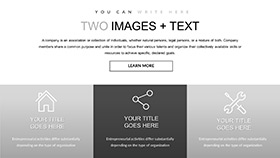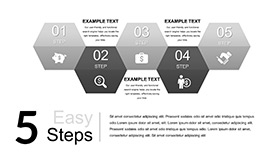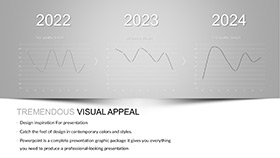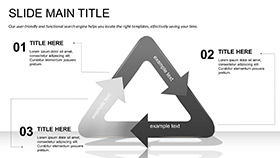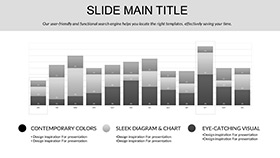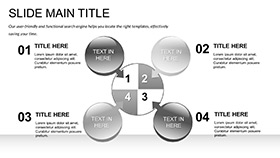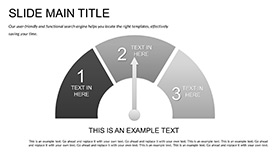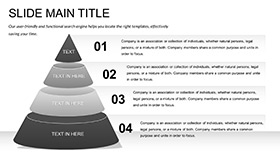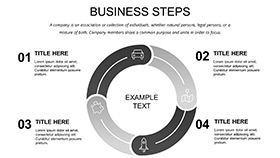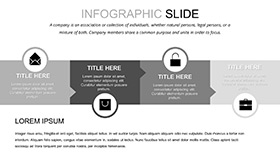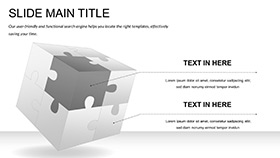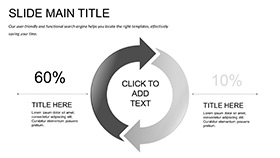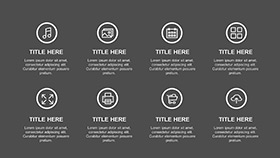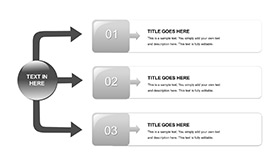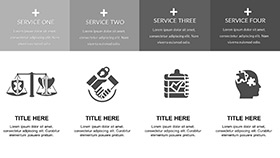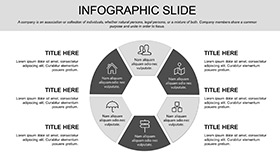Delve into the foundational elements of chemistry with a template that puts your insights front and center. The Background Chemistry PowerPoint template offers a sleek, minimalist canvas for scientists, researchers, and presenters who want to illuminate concepts like atomic structures or periodic trends without visual clutter. Boasting 28 high-quality diagrams, this tool is crafted for those moments when you need to convey the subtle interplay of elements in a clear, compelling way.
Its modern design features well-tuned typography that guides the eye naturally, paired with subtle backgrounds evoking lab precision - think soft gradients mimicking spectral lines. Fully editable, it accommodates video clips of experiments or audio narrations of key principles, making it ideal for virtual conferences or classroom deep dives. Whether you're tracing the history of the periodic table or modeling electron configurations, this template ensures your narrative flows seamlessly.
Standout Elements for Scientific Storytelling
This template's strength lies in its thoughtful construction. Diagram one introduces a layered atomic model, with orbits that expand on click for Bohr's contributions. Progress to slide eight's periodic table infographic, where groups and periods are segmented for easy annotation on trends like electronegativity.
- Diagram Diversity: From crystal lattices to pH scales, each of the 28 visuals is primed for data overlays.
- Typography Focus: Clean sans-serif fonts scale effortlessly, emphasizing formulas over flair.
- Multimedia Support: Slots for embedding simulations, like molecular dynamics videos.
- Edit Simplicity: Color swaps via theme colors keep everything cohesive.
A researcher might leverage the balance equation builder in slide 15 to demonstrate stoichiometry in real-time, adjusting coefficients with slide controls for dynamic demos.
Practical Scenarios in Chemistry Backgrounds
Envision preparing a seminar on quantum mechanics basics - this template excels by framing wave functions through waveform diagrams on slide 20, where peaks and troughs align with probability densities. For educators covering thermodynamics, the entropy timeline in slide 11 sequences laws with arrow connectors, inviting pauses for Clausius insights.
In industry, a materials scientist could adapt the phase diagram on slide 25 for alloy discussions, plotting transitions with custom data points. It outperforms standard slides by prioritizing content hierarchy, letting background knowledge shine through targeted visuals rather than dense paragraphs.
- Research Overviews: Structure sessions around foundational theories with branching org charts.
- Lab Recaps: Use before-after comparisons for reaction backgrounds.
- Student Tutorials: Animate diffusion paths to illustrate Fick's laws.
One presenter noted how the template's grid layout clarified isotope distributions in nuclear chemistry talks, fostering questions on decay chains.
Effortless Customization for Your Needs
Launch the template and navigate to the variants pane to preview layouts. For the intro slide, insert your title over the faint electron cloud backdrop, then format via the format painter for uniformity. When building a content slide, drop in a gas law graph - Boyle's or Charles's - and link axes to Excel for live updates.
Enhance with transitions: fade the background elements to reveal foreground data gradually. For cross-platform use, export sections as interactive PDFs. This approach meshes with software like Origin for graphing imports, streamlining from data to display.
Consider the equilibrium constant slide: toggle between Kc and Kp expressions using duplicate layers, visible only on select. It's a quiet powerhouse for those unpacking chemistry's building blocks.
Elevating Your Chemistry Narratives
What sets this apart is its restraint - minimalist aesthetics amplify the profound, like how Mendeleev's table revolutionized predictions. Optimized for high-res displays, it handles intricate details in catalysis schematics without pixelation.
From valence shell explorations to buffer solutions, the template invites experimentation. Customize now to ground your presentations in solid, visual foundations.
Frequently Asked Questions
Is this template animation-ready?Yes, it includes preset animations for diagrams, customizable via the animations pane.
What file formats are available?Downloadable as .potx for templates, .pptx for presentations, and .jpg for previews.
Can I use it for non-chemistry topics?Its versatile design works for any scientific background, with easy theme adjustments.
How many color options does it have?Seven schemes, plus full RGB customization for precise matching.
Does it support hyperlinks?Indeed, with built-in action settings for navigating between foundational concepts.









